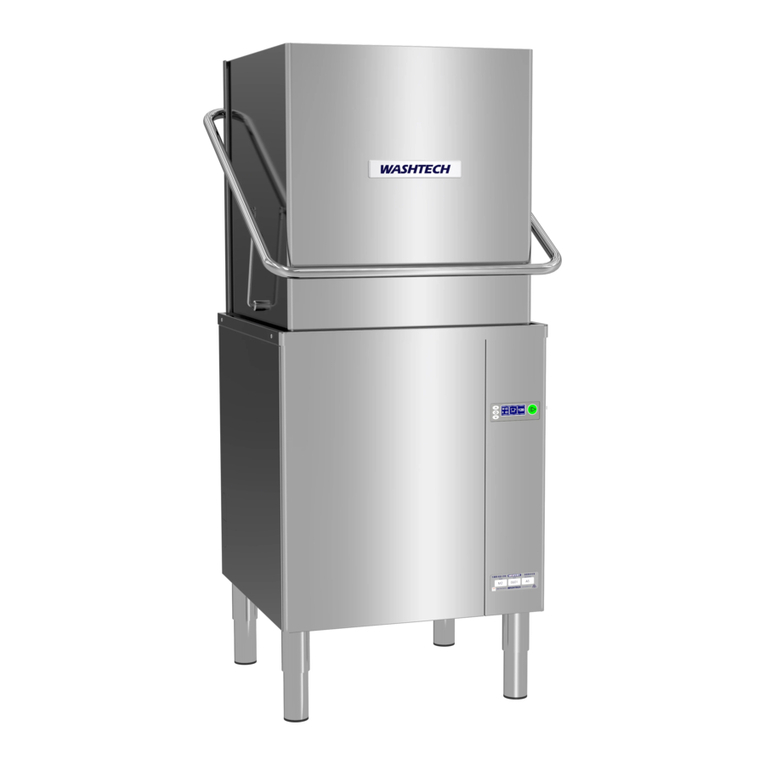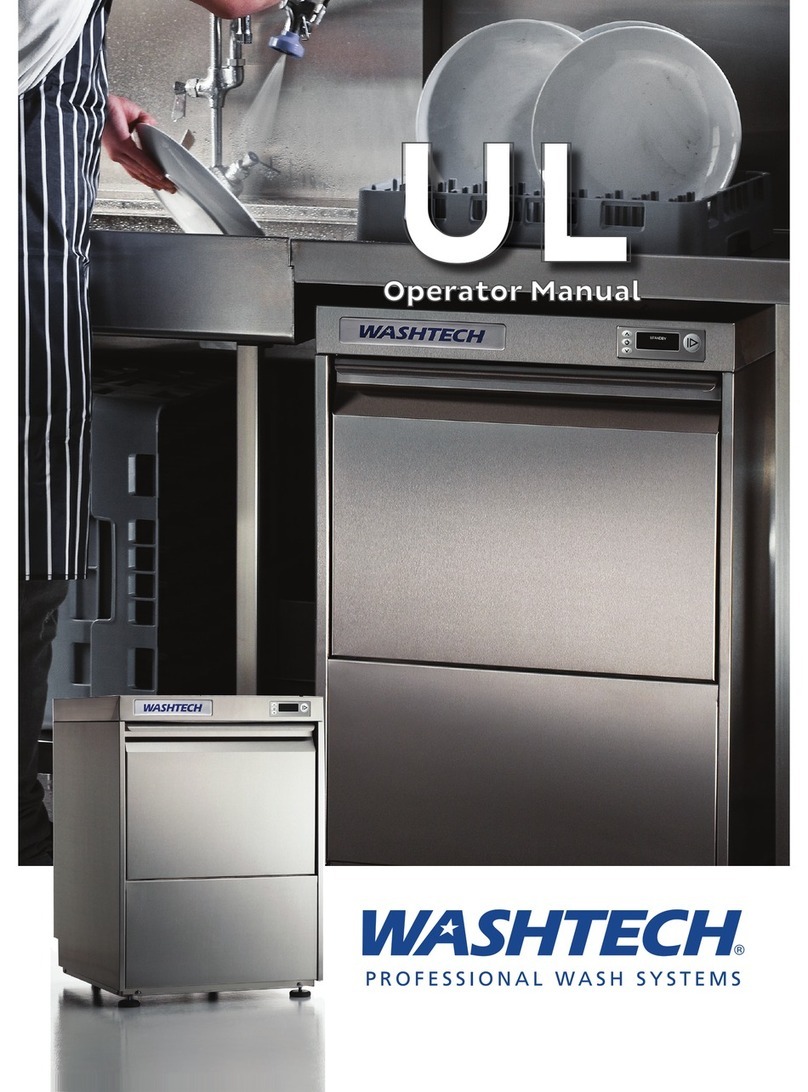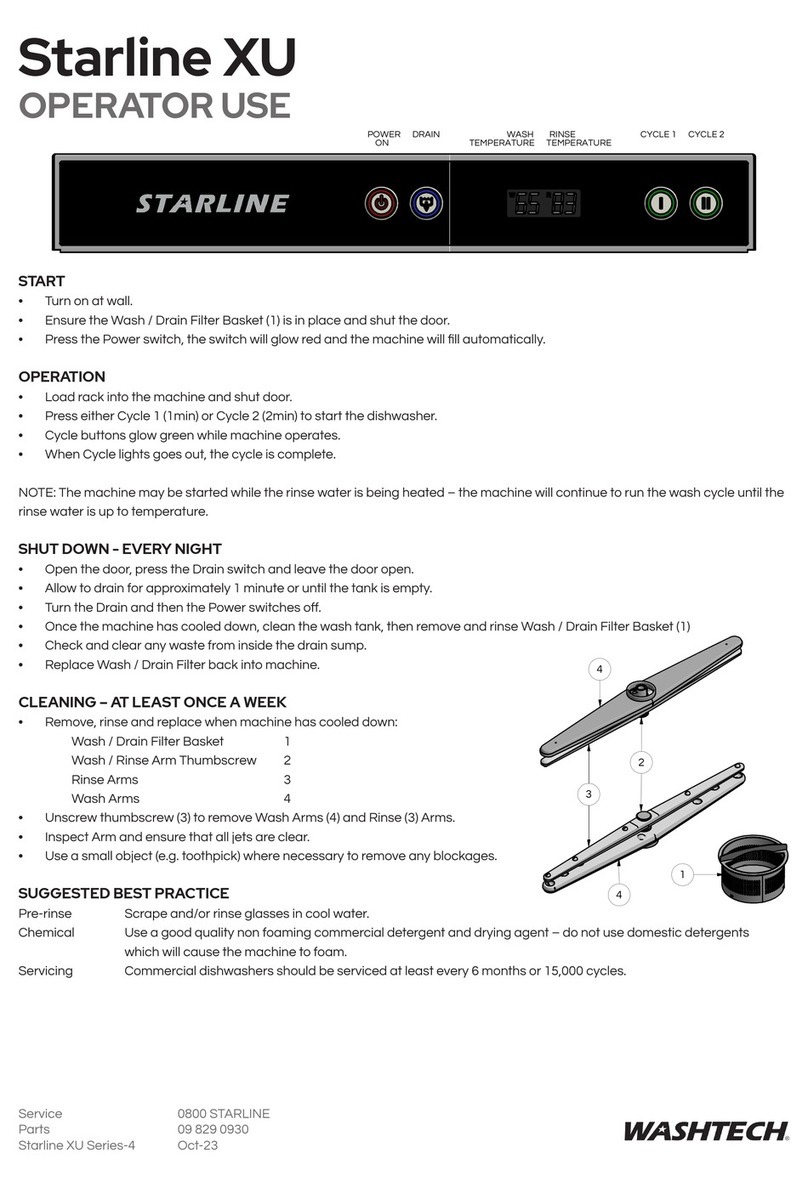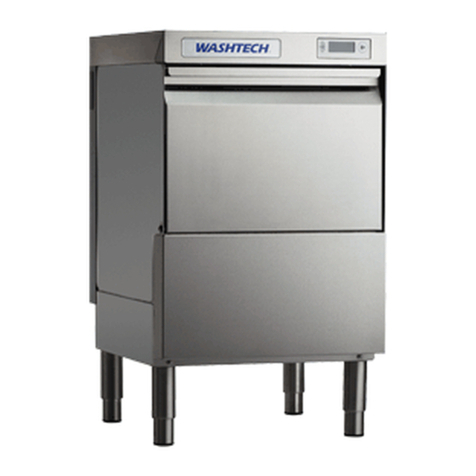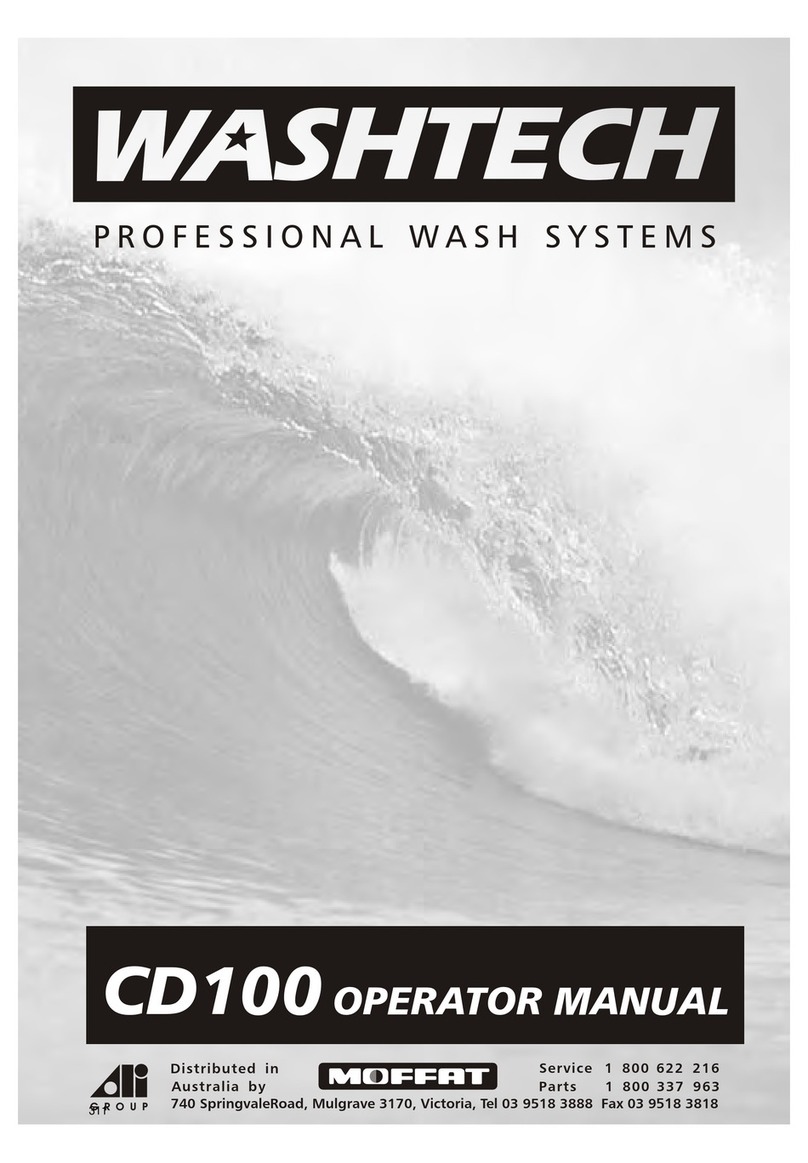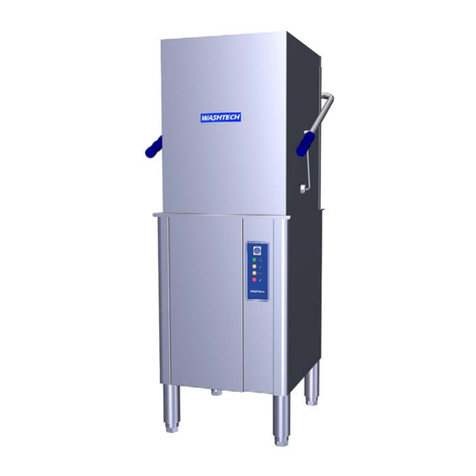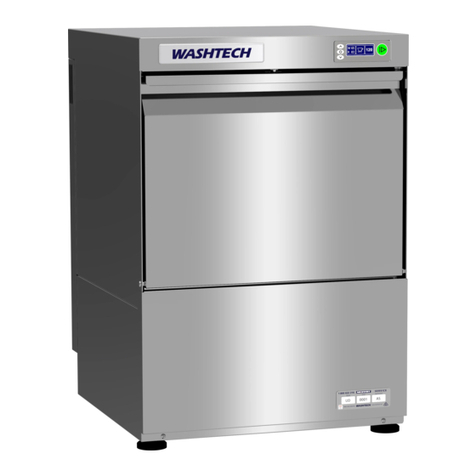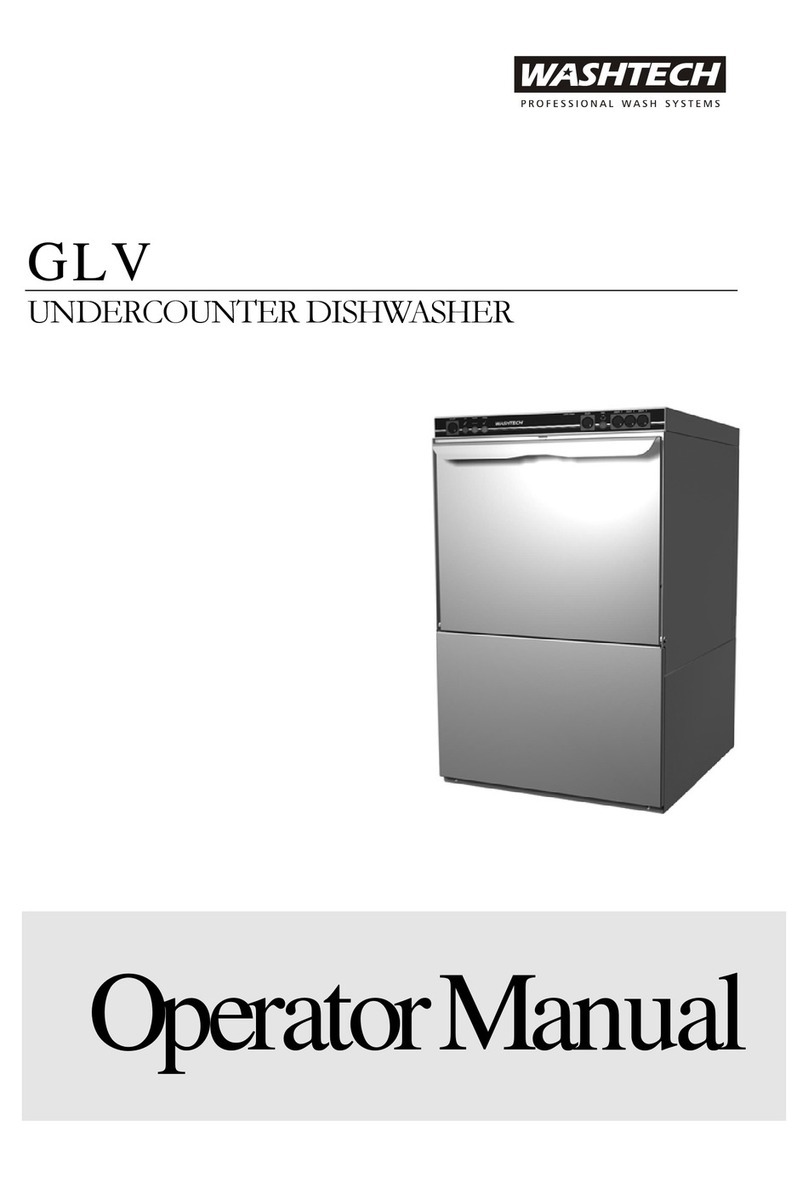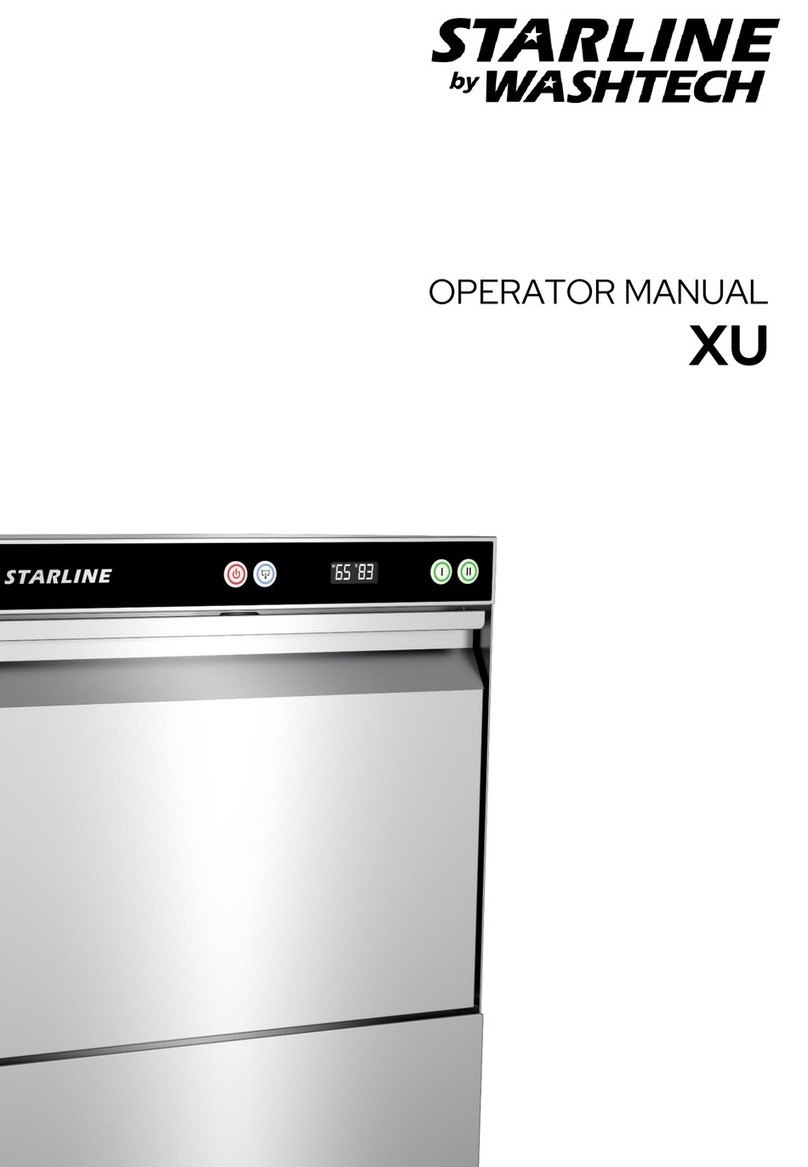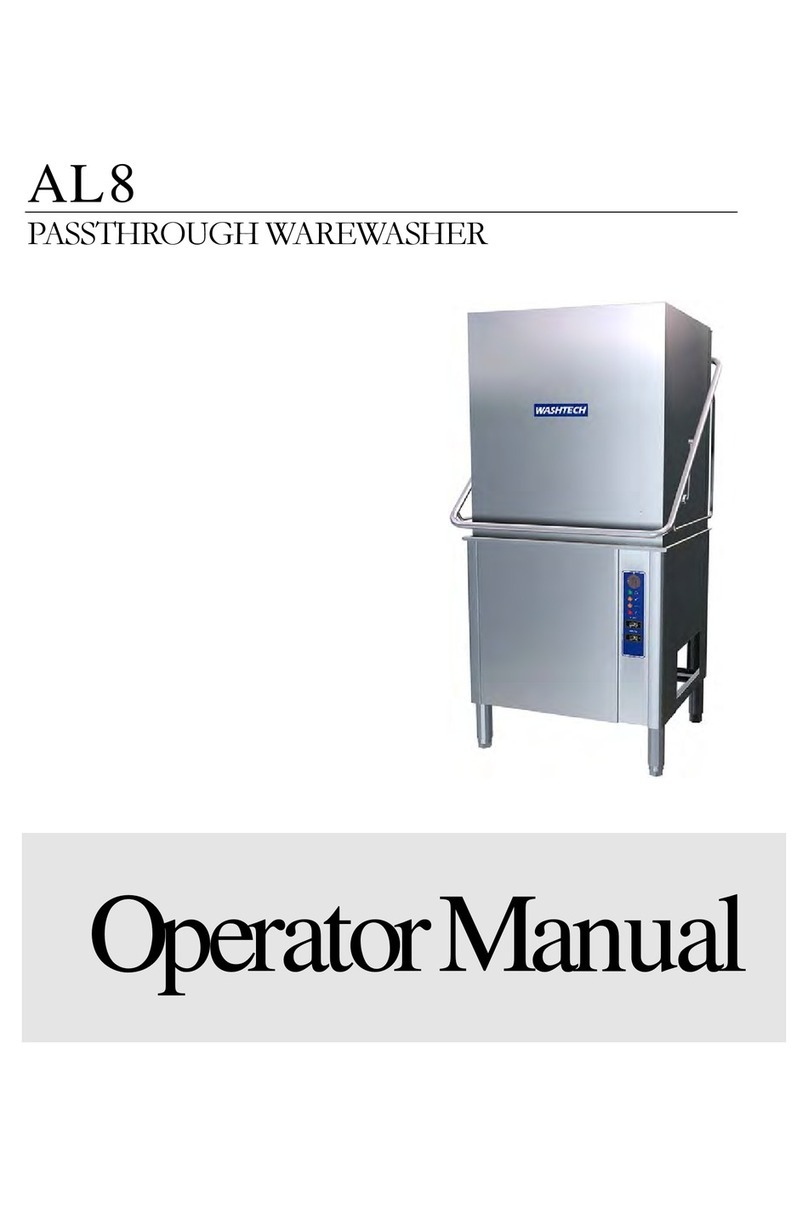
Installation
WARNING
Installer must be suitably qualified and ensure compliance with all local codes and
standards including AS/NZS 3500.1.
Failure to comply even partially with installation instructions may void the
warranty.
Positioning
Unpack machine, check for damage and complete delivery. Install machine on
sound waterproof self-draining floor and use adjustable feet to level machine.
Allow room for detergent to one side of machine or in adjacent cupboard. 20litre
container requires about 450H x 250W x 350D, but smaller containers are available
from many suppliers.
Water Supply Hot water temperature 65°C ± 5°C
Connection 20 mm (3/4” BSP) male
Hot water consumption 300 litres per hour approximately
Backflow prevention DCV = Dual Check Valve fitted standard
Pressure 200-400 KPa = 30-60 Psi.
Above this range fit pressure limiter. Don’t use small diameter plastic supply lines
especially below this range when optional rinse booster pump may be required.
FLUSH supply line before connection. Poor quality supply or excessive water
hardness may affect performance or damage machine – filtration and/or softening
is recommended.
Waste 40 mm gravity drain – refer points B on installation diagram – run waste directly
behind the machine or through open base.
Power Machine requires 3 Phase, Neutral and Earth, 400/415V, 25A/ph, 50Hz,
permanent wiring via wall switch to point C on installation diagram. Wash pump
rotation must be checked after installation to ensure correct direction (causes
excessive noise and damage).
Ventilation
10 m³/min = 170 l/sec – refer points F on installation diagram – extraction via
connected ducts or overhead canopy.
Commissioning Procedure
Connect all services as above. Turn on water and switch on power. Close machine
door and switch machine on, machine will fill. When water sprays from rinse arms
inside machine, switch machine off at wall. Remove lower front panel and switch
commissioning switch by breaking label over same.
Installation Checklist
Complete attached Installation Checklist to ensure machine is installed and
running correctly, and operator is familiar with operating procedures.
Troubleshooting
If machine doesn’t fill after switching on power, check and ensure that hot water
supply tap is open, water supply pressure is not below specification and Dual
Check Valve is correctly installed (arrows on the dual check valve’s body specify
water flow direction).

